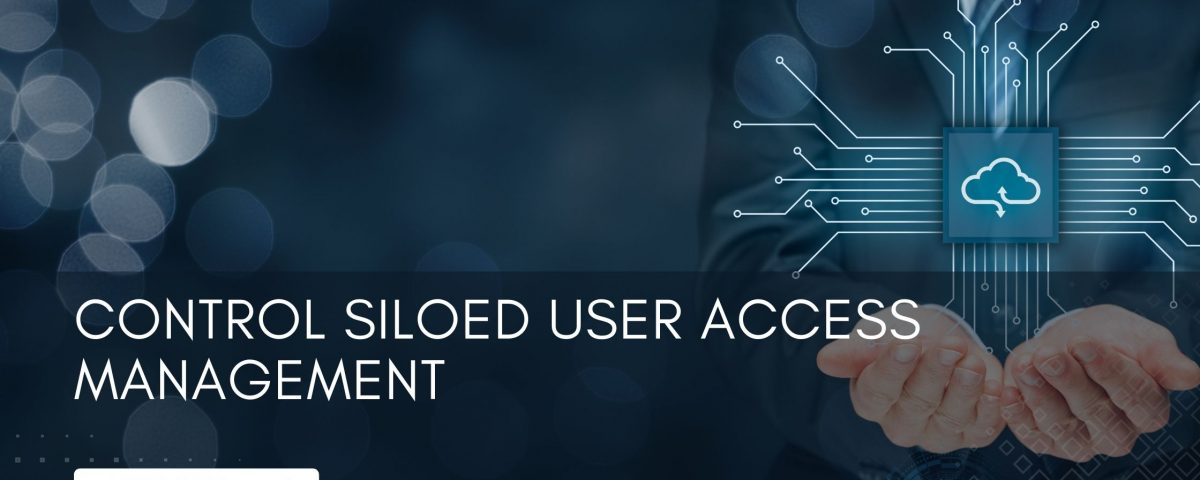Control Siloed User Access Management


Control siloed user access management
Organizations are looking for new ways to generate value and promote business efficiency. Modernization is driving the acceleration of digital transformation, and ERP systems are often at the heart of a transformation project. Consequently, securing critical applications and infrastructure is becoming an increasingly complex endeavor. Increased reliance on applications and services hosted in the cloud makes securing the enterprise’s hybrid- and multi-cloud architectures a high priority. Because enterprises rely on an ever-growing number of systems and applications, user identities are proliferating. To securely leverage the advantages of the cloud requires enterprises to reconsider how they manage digital identities and user access. That means dealing with the complex problem confronting siloed systems and platforms to manage user access.
Challenges with controlling siloed access management
When a user's identity is managed by multiple siloed systems that are not integrated or communicating with each other, it causes a real headache for organizations. Siloed access requests from multiple sources (IAM tools, helpdesk, and email) create potential inroads for malicious actors seeking access to your systems and applications.
Siloed user access also increases administrative costs and burdens on the enterprise associated with managing all the accounts. It is common for enterprises to process hundreds of user additions, changes, and delete requests daily. These processes are often inconsistent, ad-hoc, and manual with many human touchpoints: business managers, help desk, etc. Disparate provisioning tools can manage user access and workflows embedded within the applications. Still, they do nothing to solve the problems that siloed access provisioning creates. For example:
- Increased cost of ownership for multiple systems
- Reduced or wasted productivity
- Increased audit complexity
- Lack of real-time visibility
- Processes bottlenecks
- Staff satisfaction
The administrative burden is only part of the problem associated with siloed access. Siloed access makes it more challenging to record an audit trail and enforce consistent security and compliance policies. Siloed access also increases the likelihood of users reusing passwords, leaving the enterprise vulnerable to credential spying through the installation of spyware by bad actors.
Specifically privileged user accounts. Privileged user accounts are the keys to the kingdom for threat actors. Once bad actors have control of these accounts, they can operate undetected with the credentials of a trusted user. Bad actors can steal confidential data and bypass business processes with this privileged access. To mitigate the risk of abuse by malicious employees or bad actors, enterprises must adopt a comprehensive approach to Identity Governance and privileged access management.
What can organizations do to consolidate siloed user access management?
With users working from home and accessing applications from their personal devices, your attack surface has never been larger. You can keep adding individual security products to defend increasingly sophisticated threat actors. But cobbling together point solutions creates security gaps, fragmented visibility, complex administration, and limited ability to scale. To curb the proliferation of siloed access management, enterprises can implement the following systems to protect themselves.
- Identity governance hub
Implementing an
- Policy-based access
Cloud computing enables organizations to store large amounts of information in the same data store, which is a significant competitive advantage. However, this data can vary in type, source, and security level—particularly when considering data security compliance laws and regulations regarding customer data and financial information.
Traditional identity management systems work when data can be siloed. But when data is stored together in the cloud, policy-based access control is necessary. This is because policy-based access allows data with different access requirements to reside in the same storage without security or compliance issues. In short, policy-based access control will equally enable data with varying access requirements to existing within the same datastore. This granularity level gives organizations complete control over their data access control policy.
A policy-based access control solution is imperative with the increasing complexity of data, rapidly changing roles, and rising security breaches. The flexibility, usability, and simplicity of policy-based access control allow businesses to mitigate risk efficiently and reliably and provide auditors with the information they are looking for.
- Single sign-on access
Single sign-on (SSO) creates a seamless user experience by replacing passwords with secure tokens. SSO provides greater control over who has access to what without disrupting workflows or productivity. Users authenticate once to access all the applications they are authorized to use.
- Privileged Access Management
Privileged accounts include local and domain administrative accounts, emergency accounts, application management, and service accounts. These powerful accounts provide elevated, often nonrestricted, access to underlying IT resources and technology, which is why external and internal malicious actors seek to gain access to them. It is critical to monitor, audit, control, and manage privileged account usage. Organizations implementing a Privileged Account Management system can protect, monitor, and audit privileged account access, reducing the possibility of data destruction, exfiltration, ransomware attacks, and system failure.
Data is the enterprise's most valuable asset. As such, enterprises need to adopt the approach of least privilege access. Least privileged access protects data by controlling who has access to what resources, when, why, and for how long. This begins with controlling siloed access.
Learn how SafePaaS is helping organizations address the challenges of siloed user access management. READ MORE

